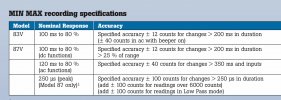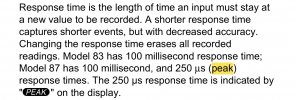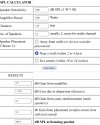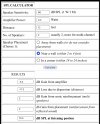I did a crude test to see how much the 120 line drooped when playing music.
Set-up:
Fluke 87V, calibrated.
Took max/min/avg readings x 3, averaged for each measuring location:
Police 'Every Breath...' ~ 4 minutes each
80 dBA, I listen at 75, used ear muffs lol
Measuring locations:
Probes in receptacle
Probes in Furman PST8 (amp, computer, DAC) are supplied by it.
PU values, base is 123 VAC (just multiply the value x 123 to get the V, imo PU shows differences more clearly)
Vbase = 123, PU = 1.000
Reading......recept.......PST
Max- 1.000, 0.998
Min- 0.996, 0.995
Avg- 0.998, 0.996
My amp draws 150 VA at idle, 1.25 A
Music may have peaked at 20 W, another 0.7 A
~ 2 A peak
Max Vdrop at PST8 (0.998 - 0.995) x 123
0.37 V, 0.3%
Average 0.25 V, 0.2%
Tracked the receptacle, ie, followed it, no lag or damping.
No music, amp on, 0.1 V
No music, amp off, obviously 0.0
No impact
Set-up:
Fluke 87V, calibrated.
Took max/min/avg readings x 3, averaged for each measuring location:
Police 'Every Breath...' ~ 4 minutes each
80 dBA, I listen at 75, used ear muffs lol
Measuring locations:
Probes in receptacle
Probes in Furman PST8 (amp, computer, DAC) are supplied by it.
PU values, base is 123 VAC (just multiply the value x 123 to get the V, imo PU shows differences more clearly)
Vbase = 123, PU = 1.000
Reading......recept.......PST
Max- 1.000, 0.998
Min- 0.996, 0.995
Avg- 0.998, 0.996
My amp draws 150 VA at idle, 1.25 A
Music may have peaked at 20 W, another 0.7 A
~ 2 A peak
Max Vdrop at PST8 (0.998 - 0.995) x 123
0.37 V, 0.3%
Average 0.25 V, 0.2%
Tracked the receptacle, ie, followed it, no lag or damping.
No music, amp on, 0.1 V
No music, amp off, obviously 0.0
No impact
Last edited:





